Market
Brexit Weakened the London Art Market, But There Are Signs That the Gallery Scene Is Stronger Than Ever
Homegrown and international dealers and collectors continue to buoy the London market.

Homegrown and international dealers and collectors continue to buoy the London market.

Vivienne Chow

Ever since the U.K. officially left the European Union in January 2020, the London economy seems to have lost its mojo. Its stock market succumbed its leading European position to Paris last year, and local tourist shopping is said to be on the verge of dwindling below that of Paris and Milan. Doubts of the prospect of the city’s art market are also on the horizon, particularly after last year’s buzzy launch of Paris+ by Art Basel. Some galleries have left London for new spaces in the French capital; meanwhile, two London fairs, Masterpiece and Art and Antiques Fair Olympia, canceled their events, citing Brexit.
But while Brexit—plus inflation and rising costs of living—has undoubtedly damaged the country’s art market, that reality masks another, more encouraging picture. The U.K.’s art market remains the world’s second largest, with an 18 percent share by value after the U.S., which dominates with 45 percent, according to this year’s Art Basel UBS Art Market Report.
“I believe London will remain Europe’s most important city for the art trade,” said Thomas Stauffer, art advisor and co-founder of the Zurich-based Gerber & Stauffer Fine Arts, which has long done business with the London art market. “Keep in mind that London is somehow the only ‘megacity’ or ‘global city’ in Europe.”
London has a population of 14 million including the metropolitan area, and it is also the most ethnically diverse city in the country. Its history and world-class cultural institutions provide “‘soft power’ at its best,” according to Stauffer.
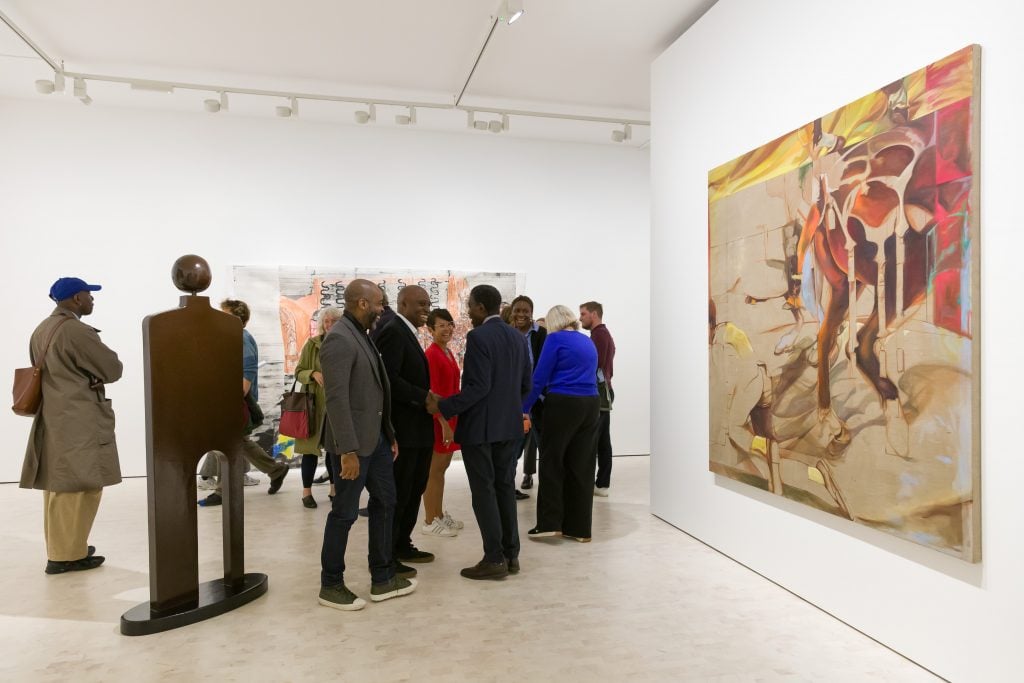
Opening night of Stephen Friedman Gallery’s new London space on October 6, 2023, featuring ‘Free The Wind, The Spirit, and The Sun,’ a new exhibition by British-Nigerian artist Yinka Shonibare. Photo credit: Mark Blower. Courtesy Stephen Friedman Gallery.
There’s also been a number of new galleries opening in London over the past two years, while others are expanding. Just during this Frieze week alone Alison Jacques opened a new 6,000-square-foot space on Cork Street, Stephen Friedman inaugurated its new space (also on Cork Street), London gallerist Pilar Corrias opened a new flagship in Mayfair, Tiwani Contemporary is opening its new space on Cork Street today, and Lehmann Maupin announced this week that the gallery will be opening a new pop-up location (also Cork Street) in London in 2024, in addition to its current space at South Kensington’s Cromwell Place.
“London has been a cornerstone of the art market since the 18th century. Brexit has undoubtedly had an impact, but to established commercial galleries with global artists, there is minimal disruption,” said dealer Stephen Friedman, whose gallery has been in London for 28 years. “London goes from strength to strength and I don’t see that changing. It attracts great artists, gallerists, and collectors throughout the years and has done so historically.”
“If we look at history, London is resilient, physically and metaphorically,” said Maria Varnava, who founded Tiwani Contemporary in London in 2011. “It has one of the most established art ecosystems. Collectors always return to London to engage with galleries.” One reason, she noted, is the country’s official English language, which is the global art world’s lingua franca.
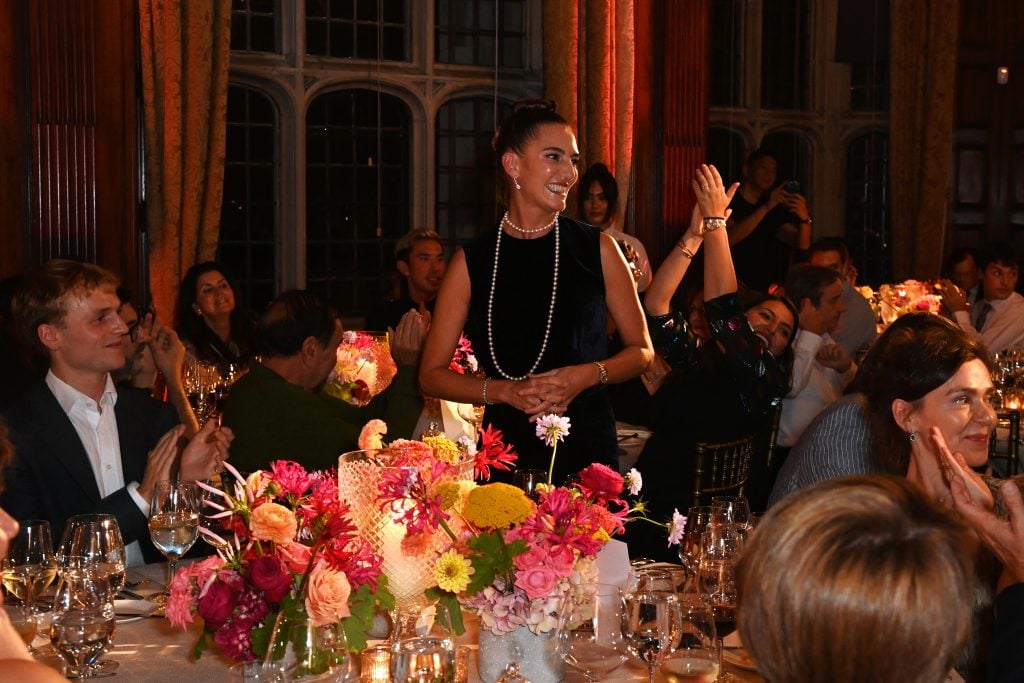
LONDON, ENGLAND – OCTOBER 09: Pilar Corrias attends the Pilar Corrias Gallery Dinner in Celebration of New Flagship Gallery, Frieze London 2023 and in honor of artists Christina Quarles and Sophie Von Hellerman at Two Temple Place on October 9, 2023 in London, England. (Photo by Dave Benett/Getty Images for Pilar Corrias Gallery)
A new generation of younger gallerists are also taking their chances on London in recent years. These include East London’s Sherbet Green and Guts Gallery; Angelica Jopling, daughter of White Cube founder Jay Jopling, opened her gallery Incubator in Marylebone in April. Sim Smith, which opened doors in 2019, moved to a new space last month. The Artist Room, founded in 2021, just welcomed visitors to its new two-floor premise on Soho’s Great Chapel Street with a solo show of U.K.-based artist William Brickel. Milo Astaire, founder of The Artist Room, said the new space, also home to Plaster magazine, “will allow for ambitious presentations of works by international contemporary artists in addition to carefully curated thematic exhibitions and special projects.”
A look at the statistics coming out of Cromwell Place, the art complex in South Kensington, may offer some interesting insights on the London art market. Opened in 2020, in the midst of the pandemic, Cromwell Place has quickly established itself as a home base for numerous art galleries and businesses (including Artnet’s London office).
Member galleries can either rent a space for pop-up shows or operate on a long-term basis. The complex has hosted exhibitions by around 150 member galleries and partner events, such as the London Design Festival’s Brompton Design District, London Craft Week, and London Art Week. Some 62 percent of the member galleries are based in the U.K., 6.6 percent from Europe, and more than 31 percent are based internationally.
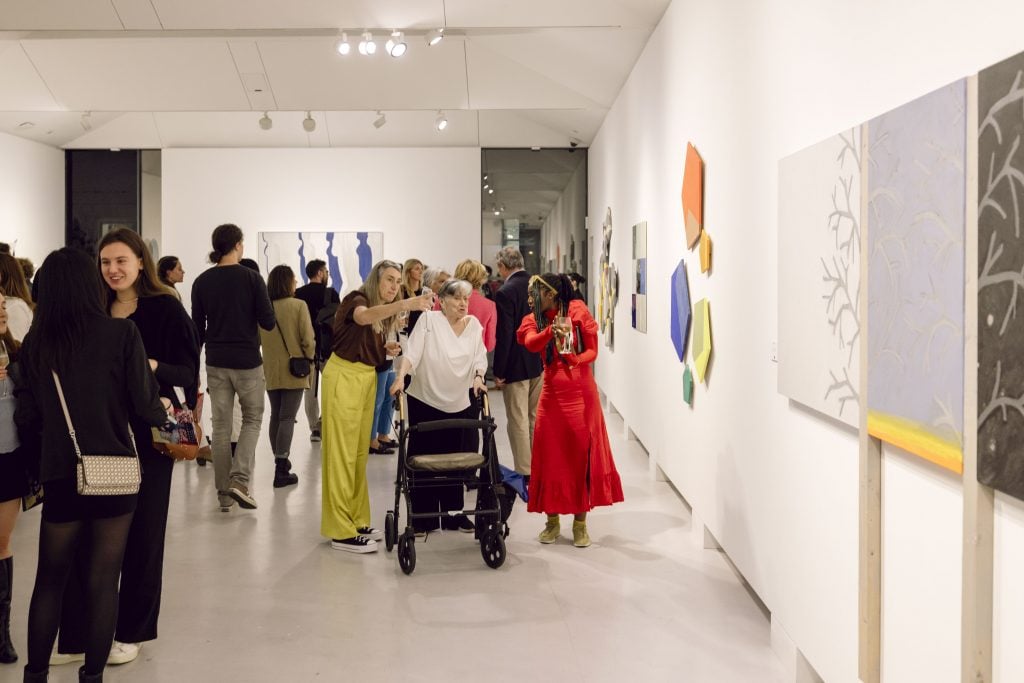
Artist Susan Weil (in white shirt) attends the opening of her solo exhibition at Sundaram Tagore Gallery at Cromwell Place, London, October 10, 2023. Photo credit: Harry Pseftoudis, courtesy Sundaram Tagore Gallery
Since its inception, Cromwell Place has hosted 62 member galleries who never had a space in London before. These include the New York-based Sundaram Tagore Gallery, which opened its first London space at the complex in May with a presentation of Hiroshi Senju works. This Frieze week, the gallery is hosting a retrospective of the 1930-born American artist Susan Weil.
“There is a two-fold perception problem reinforced by media headlines that doesn’t reflect the true health of the art market,” said Elizabeth Dellert, Cromwell Place’s chief business development officer. “The difficulties surrounding the London art market have remained focused on the financial impact after Brexit. There is indeed an added layer of paperwork and costs involved in dealing with imports and exports. However, import taxes are… the lowest in Europe.”
Dellert added that if items are brought into the country under temporary admission licenses, import duties can be deferred for up to two years, or until the items are sold. Leaving the European Union has certainly hurt London, but the city remains competitive on a global scale, especially when taking the Americas and Asia into account.
For Asian art dealers hoping to venture into the global market, London is still one of the best places to go. For many, a lingering familiarity with London stems from Britain’s colonial rule of Hong Kong, which was culturally influential in the region throughout the 1980s and ’90s. It has also remained as a main art trading hub in the Asia-Pacific since the 1997 handover to China. As Asia’s art scene and market continue to expand, gallerists from the continent are keen to explore opportunities beyond the region, and London, where 20 percent of its population identifies as Asian, becomes a top choice.
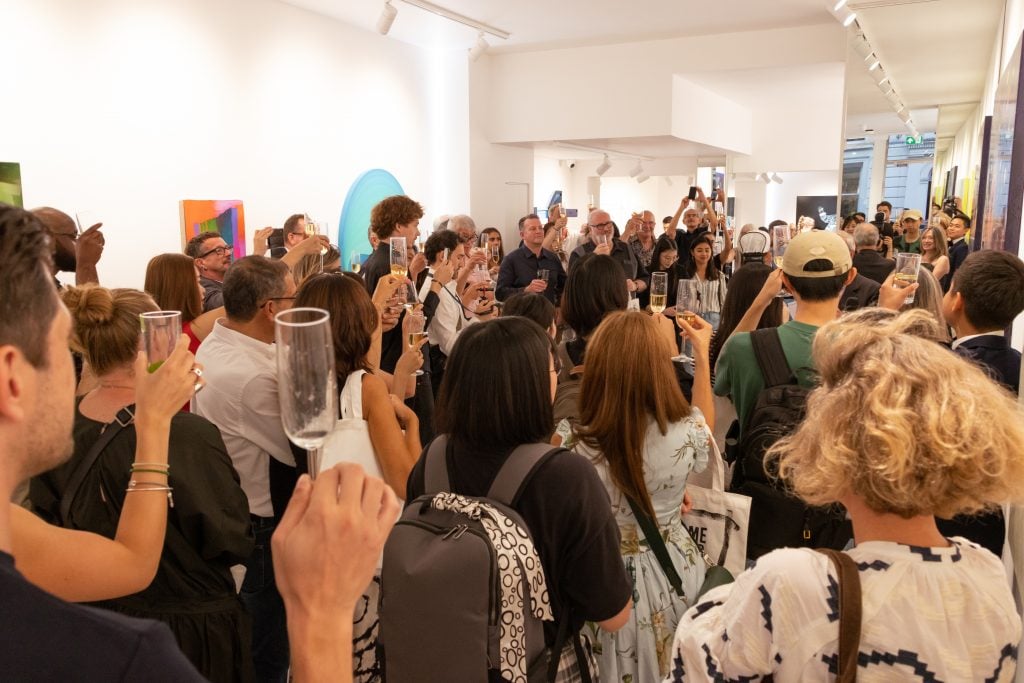
Bluerider Art Gallery celebrates the opening of its Mayfair space, September 2023. Courtesy of Bluerider Art Gallery.
Asian gallerists who have recently established footholds in the U.K. capital include A.I. Gallery, which has a space in East London and also operates as a member gallery at Cromwell Place, and 3812 Gallery from Hong Kong. Beijing’s Tabula Rasa Gallery opened its London space in Hoxton in 2021.
Bluerider Art, originally from Taipei, opened its Mayfair space just last month after three years of planning. The gallery promotes primarily Western contemporary artists in its Taipei and Shanghai spaces, but in London, it aims to foster an East-West dialogue.
Elsa Wang, founder of Bluerider Art, said that London’s acceptance of Chinese and Asian cultures has made it more comfortable for Asians to do business in the U.K. capital. She added that the use of the English language was also key to her decision to choose London over Paris or
European cities, and has since committed a 10-year lease for her gallery’s Mayfair space.
“Every city has its advantages and disadvantages. And because we are just a gallery, it’s sort of an affordable investment. It’s not a manufacturing factory,” Wang said. “My philosophy is, if we can afford it and plan it carefully, anytime is the right time for a long-term investment.”
Other galleries that aren’t yet committing to a permanent space are also exploring London’s art market in different ways. South Korea’s Hyundai Gallery is collaborating with Michael Werner to showcase American artist James Lee Byars and Korean artist Seung-Taek Lee, while Kukje Gallery from Seoul is teaming up with London’s Mazzoleni to present work by Lee Seung Jio alongside Italian artist Agostino Bonalumi in London during Frieze week.
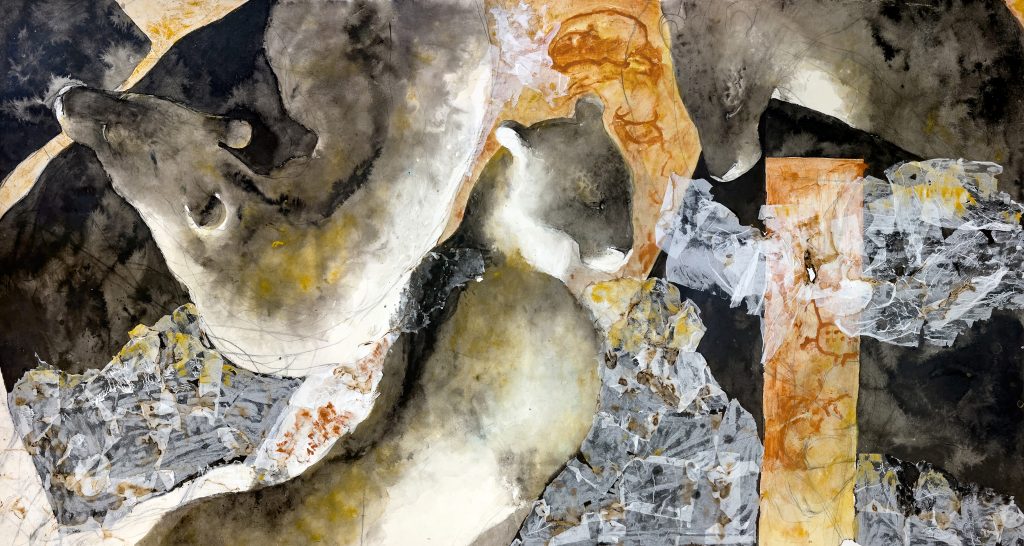
Wu Yin, Golden Time. Courtesy of Ming Gu Gallery.
London-based emerging art dealer Guming Song staged his first pop-up show under the banner of Ming Gu Gallery last month, with a mission to bring under-represented East Asian aesthetics to the Western art world. Song, who relocated from his native China and has been living in the U.K. for 14 years, opted for a pop-up model for its flexibility, with an initial plan to stage exhibitions every five months for the first two years and then scale up. “London is a well-established center for art, which has a strong ‘gravitational pull’ for a wide range of people, from the general public to serious collectors,” he said.
Meanwhile, Seoul-based gallerist Jason Haam will return to London in November for a second pop-up show titled “Karma,” featuring Jungwook Kim, Minjung Kim, Mike Lee, and Moka Lee, four Korean artists across four decades, from the 1960s to 1990s. He believed that European audience is curious about the art from South Korea following the success of Frieze Seoul two years in a row.
“London is still a top city for the arts and a center for the European art market,” Haam said. “The English-language media is also much more impactful than other languages and London is a media hub, so it’s not all just London’s art market.”